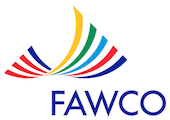According to the UN World Health Organization (WHO), there are an estimated two million women in the world living with fistulas. Another word for fistula is ‘hole.’ So, in other words, there are over two million women who literally have a hole in the lower cavity of their bodies, and as a result, cannot control the passage of their bodily discharges.
Obstetric vs. Traumatic Fistulas
Fistulas are classified into two categories: obstetric fistulas and traumatic fistulas. Obstetric fistulas are childbirth injuries caused by prolonged obstructed labor and account for the majority of fistula cases. Traumatic fistulas are caused by violent sex, rape or vaginal / rectal torture, and are part of the grim reality facing many women who live in militia-controlled conflict areas and war zones.
Suffering of fistula victims
Regardless of how their fistulas are formed, the destinies of the victims are invariably the same: a life of physical and psychological pain, social isolation and humiliation. Due to the constant leaking, they are likely to feel constant pain and discomfort, develop ulcerations in the vaginal tract and easily contract infections. They may become afflicted with a condition known as “foot drop,” making it difficult or impossible to walk because of extreme nerve damage to the lower limbs caused by prolonged squatting during labor. They may develop kidney disease or even kidney failure due to their limited intake of fluids in effort to minimize the incontinence. Because of their shameful condition, they are likely to be abandoned by their husbands, shunned by their families and cast out from their communities. They are often left to suffer the loss of their babies, their severe medical condition and their psychological trauma in social isolation.
$300 for Treatment
While the effects of fistulas are traumatic, the condition is surprisingly easily treatable and has a 90% healing rate. The cost of one operation is approx USD$ 300. Unfortunately, most afflicted women do not know about the treatment or cannot afford it. The majority of women with fistulas live in Sub-Saharan Africa, Asia and some Arab regions. They tend to be poor, live in remote areas, have little to no education, are bound to cultural norms and, have no access to medical care.
The Addis Ababa Fistula Hospital in Ethiopia, founded by Australian Drs. Catherine and Reginald Hamlin in 1974, is recognized as the world’s leading hospital in fistula repair. It is known not only for repairing women’s internal wounds, but also for restoring women’s lives and dignity. Women who arrive as shamed victims leave as empowered survivors who often go out into the villages to educate on the subject of fistula and to look for other women suffering of the condition. Most doctors, charities and foundations involved in fistula repair are in one way or another connected to the Addis Ababa hospital.
Prevention
While traumatic fistula is inextricably linked to war and requires more challenging measures for prevention, obstetric fistula is almost entirely preventable. If quality maternal health care services such as family planning, skilled birth attendance, and emergency obstetric care could be made available to all women, incidences of obstetric fistula would practically disappear.
Obstetric fistula is considered to have been eradicated in the US for at least the last 100 years, due primarily to the introduction of cesarean sections as an option for complicated births and prolonged labors. Interestingly, cases of obstetric fistula have recently begun to surface in the US. This resurgence of obstetric fistula is being attributed to increased poverty and higher health care costs. Particularly affected are the African-American and Hispanic populations, the immigrant and illegal alien populations and the displaced native populations.
Fistula Advocacy
In 2003, UNFPA (United Nations Population Fund) spearheaded the global campaign to End Fistula, a collaborative initiative to prevent fistula and restore the health and dignity of those living with its consequences. Since then, and thanks to partnerships with organizations such as UNICEF, the World Bank, WHO, and funding from high profile humanitarians such as Bill & Melinda Gates and Richard Branson, it has succeeded in bringing fistula to the attention of the general public, policy makers, health officials, and affected countries.
How we can help
The involvement of individuals like you and me will also make a difference. Here are some things we can do:
1.Give a woman with fistula her life back. Get together with your family, your friends, your office colleagues, your church group, your book club, your local FAWCO club, and sponsor a woman’s operation.
Hamlin Fistula Relief and Aid Fund: Australian trust established by Dr. Catherine Hamlin to aid the Addis Ababa Fistula Hospital.
www.fistulafoundation.org The Fistula Foundation: US based non-profit org. supporting the work of the Addis Ababa Fistula Hospital in Ethiopia.
www.womenshope.ch women’s hope international (whi): Swiss based charity dedicated to fistula repair and prevention in Ethiopia, Chad and Afghanistan.
http://www.kiva.org/team/fight_fistulas
kiva Lending Team to Fight Fistula: organizes microcredit loans to finance fistula operations.
2. Get informed and spread the word about fistula; most people do not know what it is.
www.unfpa.org United Nations Population Fund
www.who.org World Health Organization
Bill & Melinda Gates Foundation
Health Resource Center for Women’s Health
3. Join a fistula advocacy group and be a voice for these voiceless women.
UNFPA’s ‘Campaign to End Fistula’
www.virginunite.org Richard Branson’s UNFPA partner program: ‘Campaign to End Fistula’
4. Contact the FAWCO Health Issues Team for more ideas.
**************************
Recommended reading: ‘Hospital by the River’ by Dr. Catherine Hamlin.
www.nytimes.com search: Nicholas D. Kristof / obstetric fistula.
Recommended viewing:
Youtube: “A Walk to Beautiful:” award winning film about the journey of obstetric fistula patients.
Youtube: “A Doctor and his Patient:” story about a rape survivor with traumatic fistula in Congo DR, as told by of New York Times columnist, Nicholas D. Kristof.
